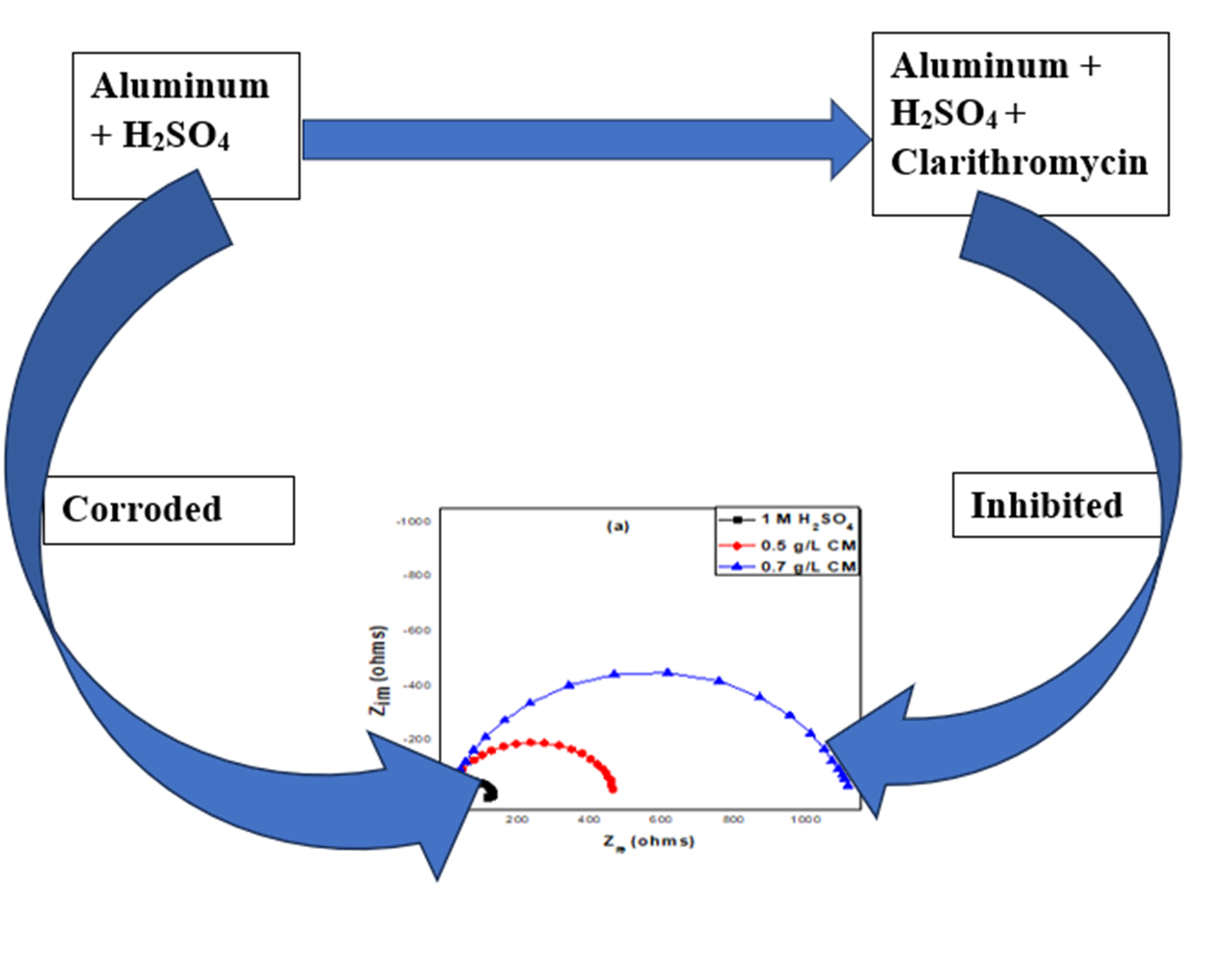Performance Evaluation of Clarithromycin as Aluminum Corrosion Inhibitor in H2SO4 Media
Keywords:
Clarithromycin, H2SO4, Corrosion inhibitor, DFT, AluminumAbstract
The potency of expired clarithromycin (CM) as an inhibitor for controlling aluminum (Al) corrosion in 1 M H2SO4 was studied using weight loss, impedance spectroscopy, and polarization measurements as experimental methods, and density functional theory (DFT) as theoretical method. The relevant groups in the inhibitor were identified with infrared spectroscopy. The heteroatoms detected by the infrared spectroscopy analysis showed the inhibitor’s potency in checkmating aluminum corrosion in H2SO4 media. Further analysis of the inhibitor via gas chromatography-mass spectrometry specifies that bis(2-ethylhexyl) phthalate, cis-13-octadecenoic acid, cis-vaccenic acid, and others were contained in the inhibitor. The inhibitive power of clarithromycin rose with an increase in the inhibitor concentration (IC) and a reduction in temperature. The heat of adsorption (Qads) results at various inhibitor concentrations were all negative with a value of -60153.3 J/mol at clarithromycin concentration of 0.7 g/L. Maximum efficiency of 91.36% was attained from the gravimetric method. The impedance diagrams obtained showed depressed semicircles with various inhibitor concentrations. PDP analysis results showed the inhibitor as mixed-type. The DFT results showed further parameters that established clarithromycin as a suitable inhibitor. Adsorption studies indicated that the Langmuir model provided the best fitting to the results obtained from the experiment since it gave the highest average R2 value. Gibb’s free energy of adsorption values of -10.16 kJ/mol and -10.14 kJ/mol were recorded at 313 K and 323 K, respectively, indicating a physisorption process. An inhibition efficiency (IE) of 96.9 % was recorded with the EIS technique. Hence, clarithromycin was confirmed to be a suitable inhibitor for checkmating Al corrosion.


